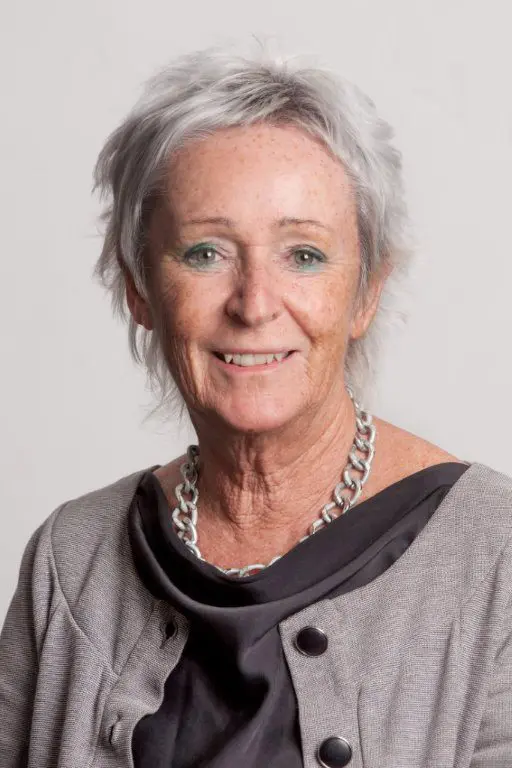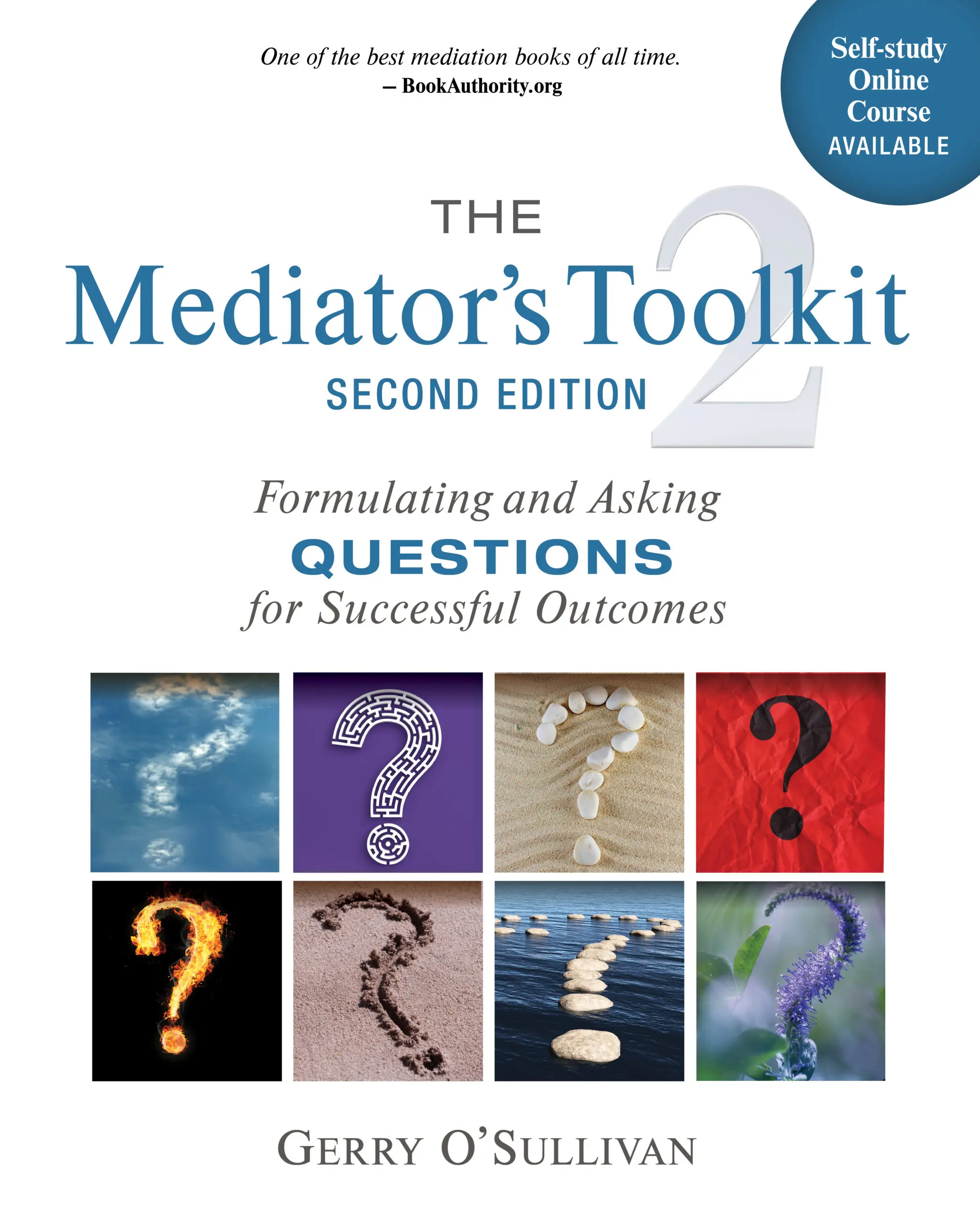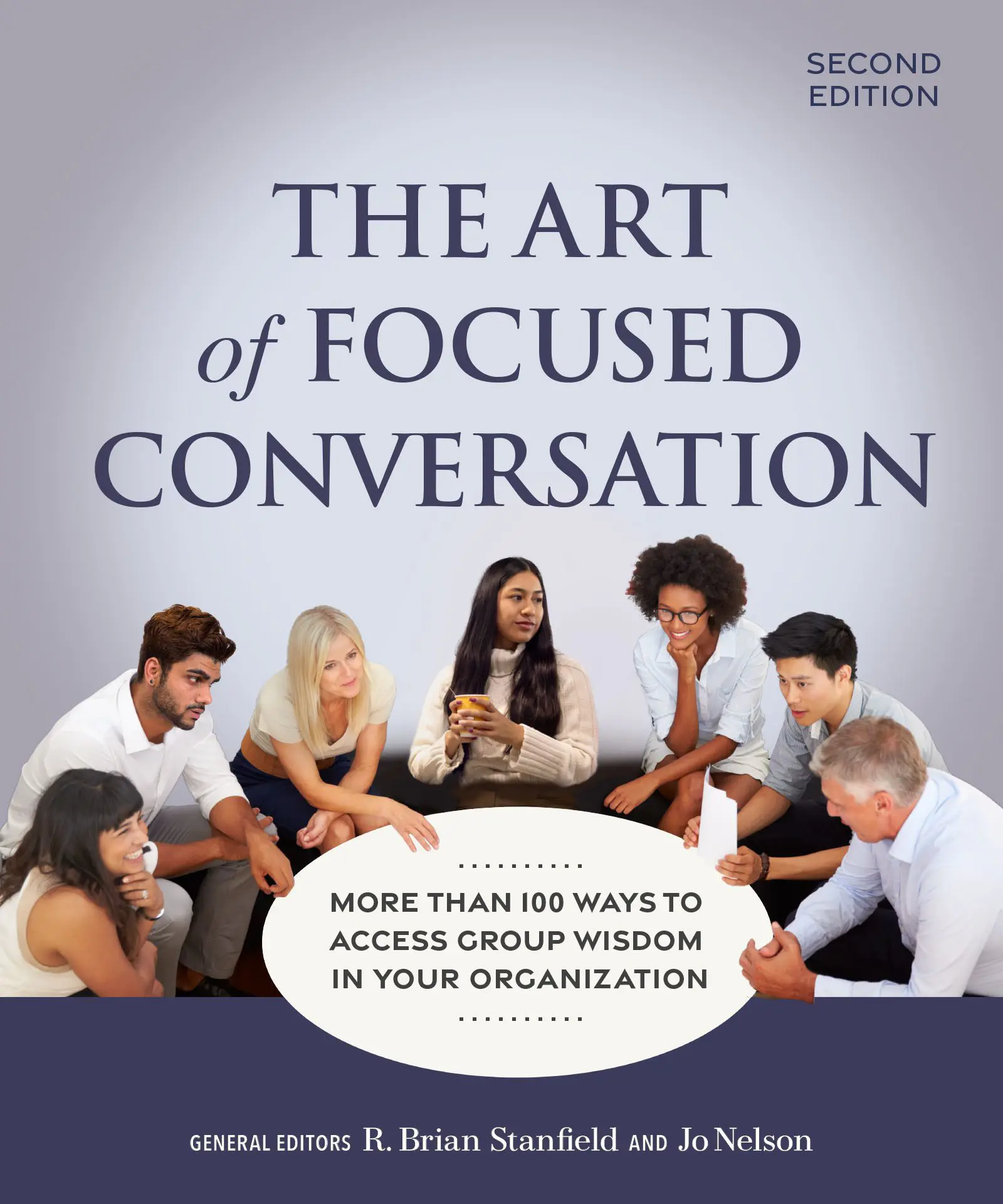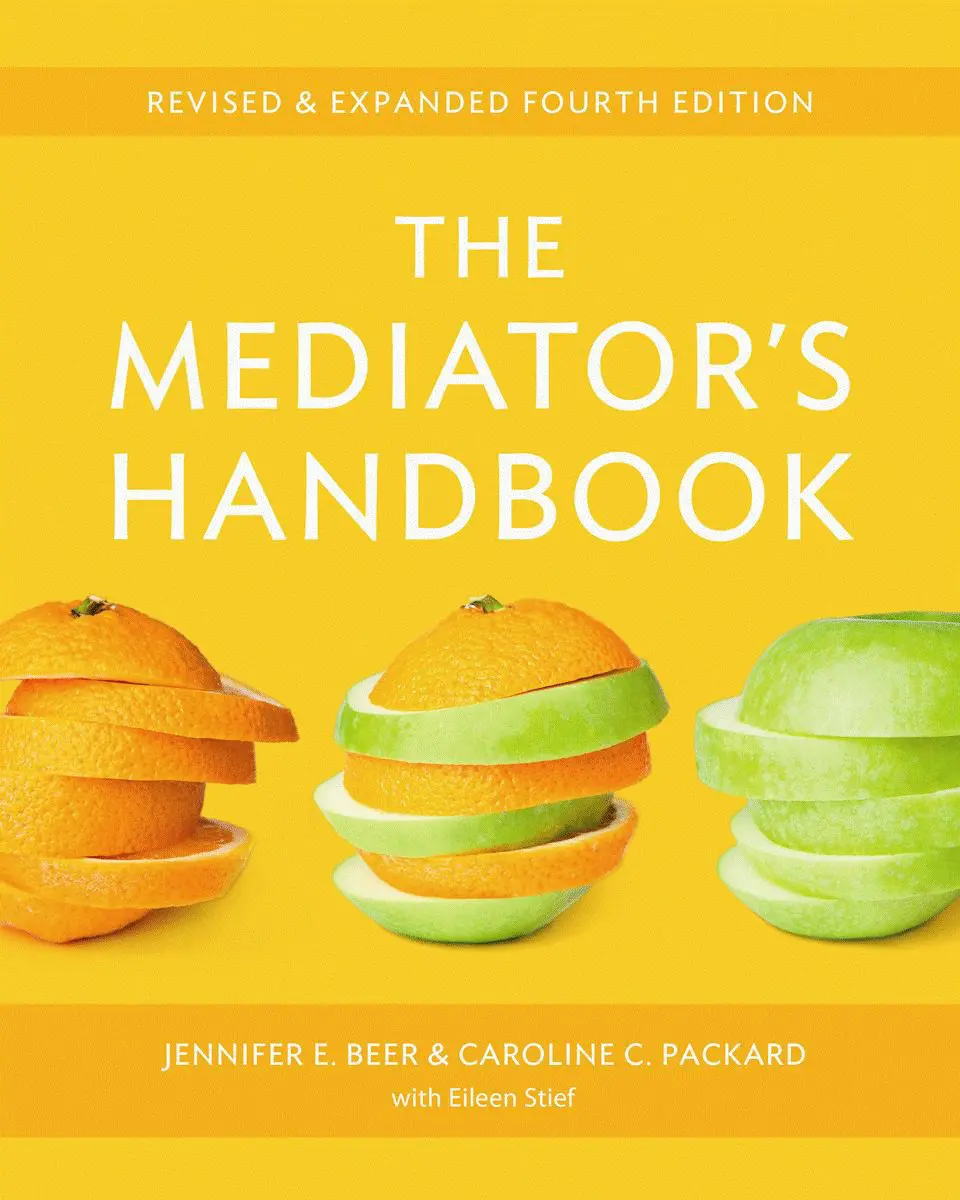
Imagine this: you’re in a mediation room for the first time in months. The energy is fragile. You ask what seems like a harmless question—and suddenly, the room goes quiet. One party shuts down. The other stiffens. Something just shifted, and not in a good way.
In mediation, questions are powerful tools—and should be used with care. A poorly timed or untested question can escalate tension rather than ease it. That’s why thoughtful preparation isn’t optional—it’s essential.
In this blog, excerpted from The Mediator’s Toolkit, Second Edition, author Gerry O’Sullivan explores how mediators can prepare strategically, using reflective techniques and the S Questions Model to ensure their questions guide rather than derail. Her insights are a reminder: the best questions don’t just get answers—they open doors.
The S Questions Model Applied to a Mediation Process
Reflective Preparation for Questions
When preparing for mediation, or during a mediation process, a mediator needs to ensure that the questions they develop are strategic, relevant, and appropriate.
They need to be able to anticipate, as much as possible, the kind of responses that people may have when asked specific types of questions in case a question inadvertently triggers an amygdala hijack. It is always wise to first try out any sensitive question in a separate private meeting before asking it at a joint meeting so that parties do not feel threatened, vulnerable, or unsafe at a joint meeting.
A mediator can prepare by reflecting on some questions:
- What might I need to ask questions about?
- What might parties need to ask each other about?
- What might I need to know? What might parties need to know?
- What might I know already? What might parties know already?
- What might I not know? What might parties not know?
- What might I think I know, and where is my evidence for this? What do parties think they know, and what might be their evidence for this?
- How will I find out what I might not know?
- Is there a question that is not obvious to me?
- What do I want each of these questions to do or to achieve?
- Is there another question or a deeper question that I could ask?
- At what forum should I ask any of these questions: initial separate meetings, joint meeting, or at separate meetings during the joint meeting?
The S Questions Model
Chapter 1 gives an overview of the S Questions Model. This chapter gives comprehensive information on how to use the model and on the purpose, development, and application of each of the S1, S2, S3, and S4 dimensions of it. To recap, the model was developed to incorporate an extensive range of questions that can be asked in a mediation process into one clear and accessible image.
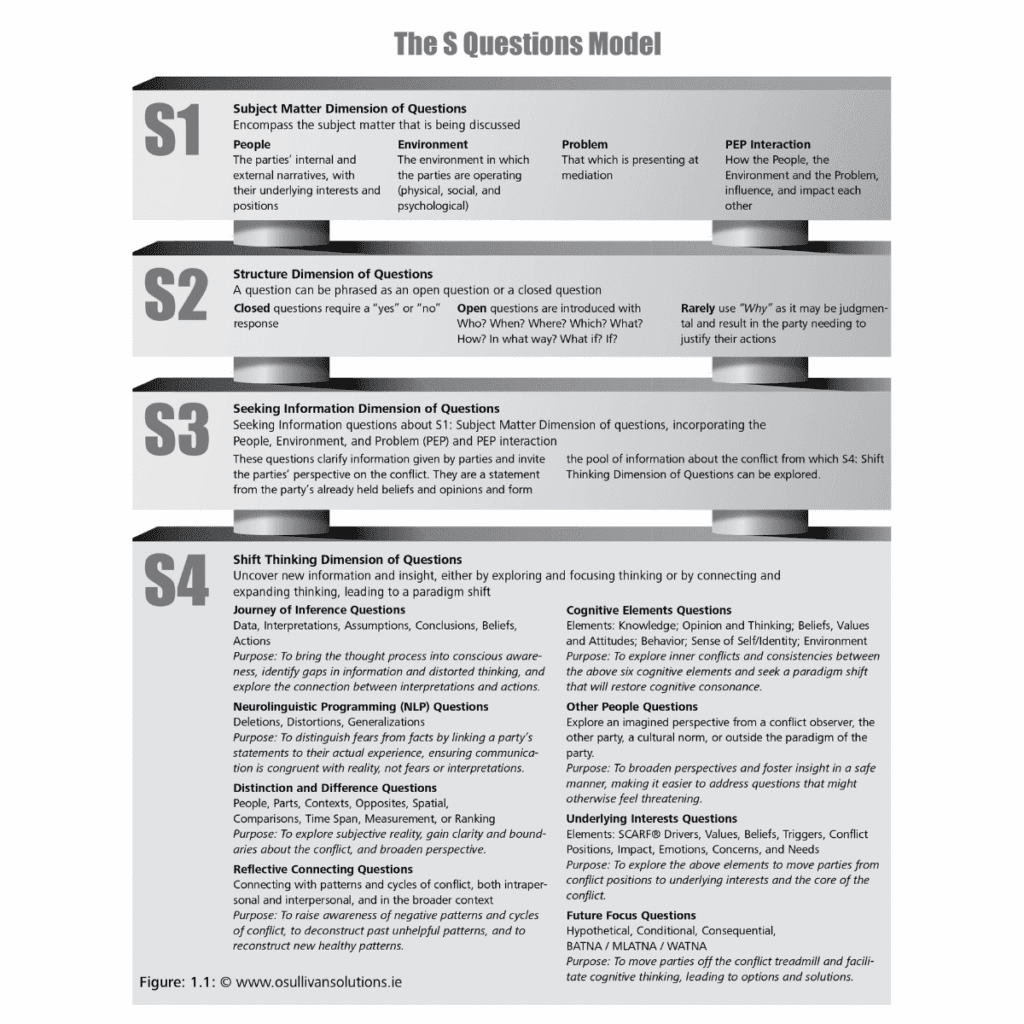
The Four Dimensions of Questions in the S Questions Model
There are four dimensions of questions in the S Questions Model, and these are categorized and labeled as follows:
- S1: Subject Matter Dimension of questions
- S2: Structure Dimension of questions
- S3: Seeking Information Dimension of questions
- S4: Shift Thinking Dimension of questions
S1: Subject Matter Dimension of Questions
All questions incorporate the S1: Subject Matter Dimension of questions and can be asked about the people involved in the conflict; the environment or context in which the conflict takes place; the problem or issue presented to mediation; and the interaction of the people, the environment, and the problem.
S2: Structure Dimension of Questions
All questions have an S2: Structure Dimension of questions incorporated in them, in that an open or closed question may be chosen. After first deciding the subject matter and the structure of a question, the choice is then between asking an S3 or an S4 question, or a combination of both.
S3: Seeking Information Dimension of Questions
These are simple, linear questions that clarify existing information or introduce information that is either previously known, or is not already known, by each of the parties. An S3 question strategically targets the information that is required from the parties for the conversations that take place during a mediation process.
S4: Shift Thinking Dimension of Questions
These questions are designed to uncover information that specifically creates new insight for the parties. The intention is to shift their thinking so that they experience a paradigm shift and look at the other party and their conflict in a different light.
While there are eight S4 questions and they are presented in the model in a certain order, each one is a stand-alone question with its own unique purpose. Each S4 category of questions may also be linked with each of the other seven categories to achieve a specific outcome. In general, the S4 questions move from hearing what happened and how a party interpreted it and acted upon it, to distilling and exploring the information presented, to making connections with other experiences or events. The questions help to identify any inner conflict or inconsistencies within a party, to safely teasing out alternative perspectives. They identify the core of a problem and facilitate the creation of a future without the problems of the past.
Hazard Warning
If a mediator is unsure whether asking a question at a joint meeting may result in a party feeling inadvertently threatened or vulnerable in front of the other party, then the question needs to be checked at a separate private meeting first.
Hazard Warnings for use of the S Questions Model
The S Questions Model needs to be used under a number of conditions:
- Separate, private meetings should occur with each party before and, if needed, during the joint meeting to determine if the S4: Shift Thinking questions can be safely asked in front of everyone.
- If unsure about a question’s safety, filter it through mediation principles—voluntariness, impartiality, confidentiality, self-determination, respect—and consider if it could make a party vulnerable.
- The decision to separate or bring parties together should depend on the process and parties’ needs, not the mediator’s training model.
- In separate meetings, act as if the absent party is behind you, observing the discussion.
- Body language should be gentle, unassuming, nonjudgmental, not interrogative or pressuring.
- The mediator needs to signpost their actions to parties: “Party A, I am going to hear from Party B first and I would like you to really listen. You may feel like interrupting, but I will give you all the opportunity you need to say all you would like to say, afterward. Then I will hear you, Party A, and I will ask Party B to listen.”
- Always ask the complainant to share their narrative first, before asking the other party. This also applies when exploring underlying interests.
- Ask the Shift Thinking Questions only after parties have shared their stories, expressed emotions, and built some trust with the mediator.
- Do not pressure parties to answer or push them beyond their comfort zone. Private meetings can help determine what is safe. If a mediator touches on past trauma, gently acknowledge its apparent and demonstrated difficulty, allow for reflection, and then continue the mediation with the permission of both parties.
- If parties don’t have or won’t have a relationship and understanding isn’t needed, exploring underlying interests in a joint meeting may not be necessary. However, if a party appears blocked by emotion, exploring underlying interests in a private meeting may help them to think more clearly and move forward.
- Some hazard warnings are specific to individual modules and are included within them.

